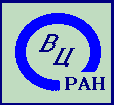Winter School Schedule
Saturday, Dec 01
| Time | Lecturer | Title |
|---|---|---|
| 09:30 | Stefano Paoletti | Mesh generation using the Voronoi method |
| 12:30 | Lunch break | |
| 13:45 | Paul Zegeling | Moving adaptive grids |
| 16:45 | Break | |
| 17:00 | Vladimir Garanzha | Variational methods for mesh generation I |
| 18:30 | Closing for the day |
Sunday, Dec 02
| Time | Lecturer | Title |
|---|---|---|
| 09:30 | Alexander Belyaev | Distance functions and their applications |
| 12:30 | Lunch break | |
| 13:45 | Vladimir Garanzha | Variational methods for mesh generation II |
| 15:15 | Break | |
| 15:30 | Hang Si | Introduction to unstructured mesh generation methods and software |
| 18:30 | Closing for the day |
Winter School Program
Mesh generation using the Voronoi method
Stefano Paoletti – Siemens Industry Software
Biography: Stefano Paoletti is currently Director of Meshing Research at Siemens SISW. Previously worked for the IBM ECSEC (European Center for Scientific and Engineering Computing) at Rome’s IBM Scientific Center where he started his focus on CFD and mesh generation. Was software developer and manager at CD-adapco in the mesh generation department for the last 20 years. His main interest is the polyhedral mesh generation in its various declinations. He was the main developer and the leader of the polyhedral meshing group in CD-adapco for the Star-CCM+ suite.
Abstract:
-
Basic theory of Voronoi meshing:
- introduction to the Voronoi graphs properties,
- methods for building a Voronoi graph suitable for meshing,
- seeds generators,
- common problems.
-
Advanced features for Voronoi meshing:
- parallel generation,
- boundary recovery (clipping, auxiliary seeds),
- local coordinates system,
- prismatic layers,
- refinement of Voronoi meshes.
Moving adaptive grids
Paul Zegeling – Utrecht University
Biography: Paul Andries Zegeling is an associate professor in Scientific Computing at the Department of Mathematics of Utrecht University, The Netherlands. Dr. Zegeling received his Master degree in applied mathematics in 1987 and his PhD from the University of Amsterdam in 1992. Between 1987 and 1992 he worked at the Centre for Mathematics and Computer Science (C.W.I.) in Amsterdam. Since 1993 he is a lecturer in Numerical Analysis and Scientific Computing at Utrecht University.
His main research areas are: adaptive moving grid methods, pattern formation in PDEs, fractional calculus, higher-order differential equations, traveling waves, boundary-value methods and applications in geo-hydrology, chemistry and magneto-hydrodynamics. He supervised five PhD students and more than fifty Bachelor and Master students. His publication list contains sixty scientific articles from several different areas of mathematics. One of his main research topics is the field of adaptive moving grid methods, so-called r-refinement techniques. The basic method in one space dimension is the equi-distribution principle. This idea can be extended to the time-dependent case in two- and three space dimensions. Sophisticated monitor functions and specialized smoothing (filtering) techniques are utilized to keep the numerical calculations on the non-uniform grids accurate, stable and efficient.
Abstract:
- structured vs. unstructured grids,
- adaptive grids based on coordinate transformations,
- equidistribution principle (stationary and time-dependent),
- smoothing in space and time,
- applications in one space dimension,
- tensor grids in two dimensions,
- Winslow’s method and extensions,
- monitor functions,
- application to reaction-diffusion systems and Euler equations,
- blow-up models in 3d,
- moving finite elements,
- the deformation method,
- the Monge-Ampere approach,
- applications to non-equilibrium models from porous media,
- optimal non-uniform grids.
talks/NumGridPart2.pdf
talks/NumGridPart3.pdf
talks/NumGridPart4.pdf
Variational methods for mesh generation
Vladimir Garanzha – Dorodnicyn Computing Center FRC CSC RAS
Biography: Vladimir Garanzha is currently Professor of The Russian Academy of Sciences and Leading Researcher at the Dorodnicyn Computing Center FRC CSC RAS. In 2001 he initiated the bi-annual Russian mesh generation meeting, NUMGRID-2018 being the 9th in the series. In 2005 he developed a mesh generation and numerical geometry course for the students of Moscow Institute of Physics and Technology. His main interests are in variational methods of mesh generation, quasi-isometric mappings, prismatic layers, discrete curvatures, and Delaunay-Voronoi meshing. In 2017 he co-authored the paper that received the Best Technical Paper Award at the 26th International Meshing Roundtable in Barcelona.
Abstract:
- hyper- and hypoelasticity in mesh generation,
- polyconvexity and iterative minimization algorithms,
- control of mesh cells via metrics in Eulerian and Lagrangian coordinates,
- smart weight functions, local orthogonality and local mesh quality boost,
- cell alignment control,
- untangling: theory and practice,
- construction and control of prismatic mesh layers,
- elastic networks for construction of Delaunay and Voronoi meshes.
Distance functions and their applications
Alexander Belyaev – Heriot-Watt University
Biography: Dr. Alexander Belyaev is currently an Associate Professor at the Institute of Sensors, Signals and Systems, School of Engineering and Physical Sciences, Heriot-Watt University, UK. His main research topics are digital geometry processing, mathematical image analysis, and applied partial differential equations, on which he published more than one hundred articles in international conferences and journals. Belyaev co-authored several Best Paper Award-winning papers at international conferences. Some of his works on surface reconstruction from scattered point data, shape feature extraction, and mesh filtering are widely cited and used by students and scholars worldwide.
Abstract:
- Shape features via distance functions and their singularities: the skeleton (medial axis), focal surfaces, surface curvature extrema (ridges and ravines).
- Distance functions and FEM: the characteristic function method of Kantorovich and its extension by Rvachev.
- Distance function in fluid dynamics: the Law of the Wall.
- The level-set method and redistancing problem.
- Distance fields for object matching and path planning.
- The geodesics-in-heat approach to distance function approximation.
- A variational approach to distance function estimation.
- p-Laplace diffusion for distance function approximation.
- Mean value coordinates and mean value potentials for distance function approximation.
- A comparison of various distance function estimation methods.
Introduction to unstructured mesh generation methods and software
Hang Si – Weierstrass Institute Berlin
Biography: Dr. Hang Si is a Research Scientist at the Weierstrass Institute for Applied Analysis and Stochastics in Berlin (WIAS). His main research interest is tetrahedral mesh generation and the discrete and computational geometry problems behind it. The goal is to develop efficient algorithms for automatically generating tetrahedral meshes suitable for numerical methods such as finite element and finite volume methods. He is the author of TetGen, a Delaunay tetrahedral mesh generator, which is freely available for academic use.
Abstract:
The aim of this course is to give the audience an introduction to the research and development in the field of mesh generation. The audience will also learn to use some freely available meshing software which are based on the introduced methods. This will allow the audience to develop advanced methods or properly choose the right methods and tools in solving challenging engineering problems in scientific computing.
A main theme of this course is the theory and algorithms of generating unstructured meshes, such as triangular and tetrahedral meshes. They are well suited for complicated geometries, can be generated fully automatically, and are feasible for locally mesh adaption. Emphases are given on those methods which have solid theoretical background and good heuristics. Robust and efficient techniques for implementations are introduced.
Talk:talks/Hang_Si_Course-numgrid2018.pptx

